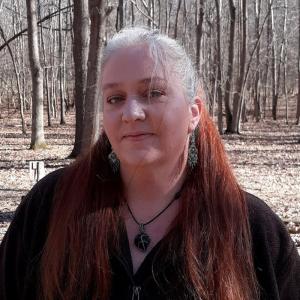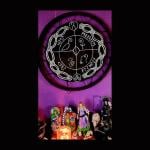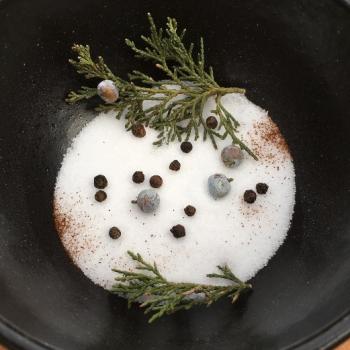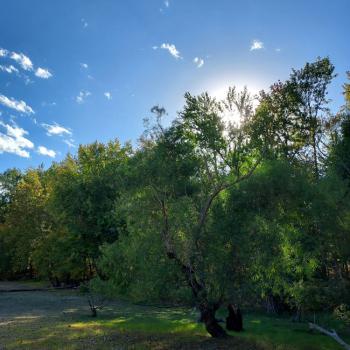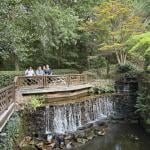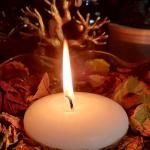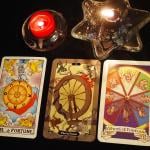The term “American Witch” is an interesting concept. It is generally used to identify a witch who lives in the US, the problem though is in the reality of that term. The United States is a big country that inhabits a good portion of an entire continent, thus a wide range of different ecosystems which leads to vastly different practices and that is not even including the various cultures and cultural blendings of different regions.
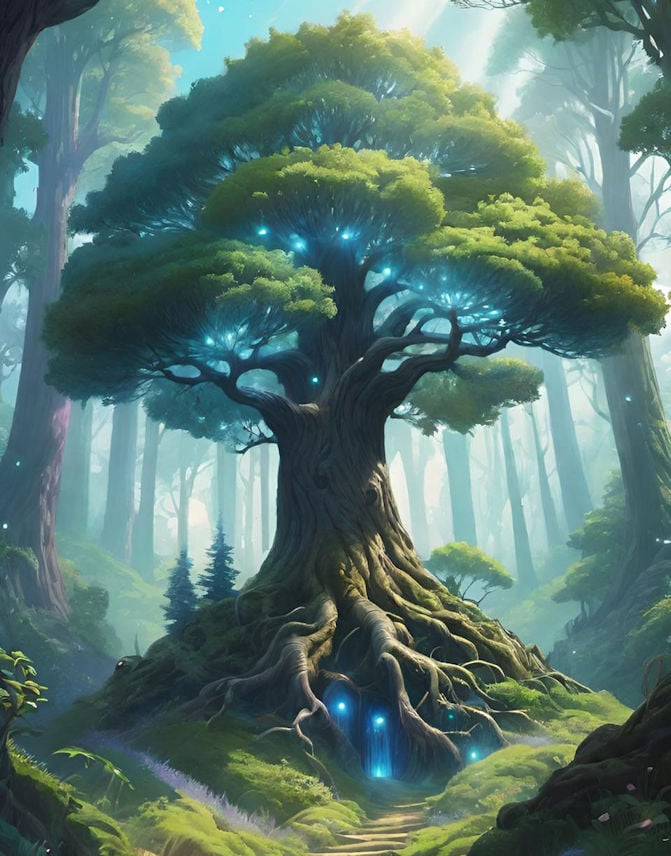
Variety of Ecosystems
The US contains almost every variation of ecosystem within its borders. We have forested mountains, rocky mountains, deserts, swamps, prairies, tundras, forests, tropical, arctic, fresh water, salt water, and so forth. Each ecosystem has different native plants, animals, and elementals.
Witches, especially those in the not too distant past, would generally work with what was around them – in their nature and landscape. They did not have occult/ witchy shops stuffed with herbs and products from around the world or the ability to obtain them online with the click of a button. This alone would have an impact on how their practices where shaped. Thus the practices of a swamp witch in Mississippi could look vastly different than a witch who lived in the Sonoran desert, even if the intention of the work was the same.
Land
The land itself – the geology, such as minerals, stones, and elements of its makeup is also a contributing factor. It shapes the energy of the land, thus affecting the energy and vibration of the land. Even in a large area like the Sonoran desert, you have different landscape make-ups within that. That means that different parts of that region can have different energetic vibrations in the land that would interact with the spell-casting of a practitioner, and even the practitioner themselves.
Plants
Different ecosystems produce and sustain different types of plants. In our modern world we are able to circumvent this through creating artificial environments, such as greenhouses, and introducing non-native species. I realize this was done to an extent with people bringing plants from their home countries and such when they relocated to the US then propagating them here, as well as, trade between countries, but it was a smaller scale for individuals than what we see today with the abilities technological advances have given us.
When it came to witchcraft and healing, they would primarily learn about and use the plants that were readily available to them, thus in their surrounding landscape. Like people of the Appalachians and Ozarks, they probably gained a lot of knowledge from Native people who knew the plants and landscapes. Witchcraft wasn’t as commercialized as it is now and people didn’t spend lots of money of things for their craft – they crafted with what was around them and what they had.
They would also learn from the animals in the area. For example, Butterweed can be a very poisonous plant if ingested, thus all the mammals such as deer avoid eating it. It is a plant that is great for pollinators though and small birds love it for the insects it draws. So from a magical perspective it is a great ward for things such as the evil eye or in Justice spells where greed is a core element. If you are not harming the plant (ingesting it) it creates a bountiful space – but if you are damaging the plant (cutting and eating it) it can kill you.
Animals
Animals play a role in the example I stated above – helping us to understand and identify potential hazards in the environment. They can also teach us much about the land itself, how to navigate it, weather patterns, and work with the environment just to name a few. Animals were not just a resource for people to exploit, we learned from them.
I live in a valley, in-between foothills, with a lake bordering one side. Due to our landscape and water source, we have a lot of predators that travel through for a drink and food. We have 3 Ravens who have made their home here with us since the first year we moved in. I have spent a lot of time getting to know them, observing them, their behaviors, and how they work together because of our small micro-environment of predator and prey habituating together. They are extremely militaristic in all their movements. They work together in a cohesive movement to hunt and protect. One flies out and perches on a branch, looks around, and then gives a vocal signal to the next. The next one flies out further down the tree line, going in front of the first – looks around – and the gives the vocal signal and the last one flies out ahead of the other two. They will do continual scouting movement until they reach their destination – each taking turns being in the front and watching the rear.
If they are going down to the feeding area (where we leave food for the animals here) or any ground hunting, two will sit in the trees above while one flies down to investigate. They will take turns guarding and eating. If everything seems quiet, all three will go to the ground after awhile but still spread out in a very specific formation and keep a solid perimeter.
They work with the other smaller birds in the valley to protect the territory. If a hawk or eagle fly into the valley, the other birds send out a distress call. The Ravens swoop in, coordinating an attack on three sides against the intruder forcing it either down or out. I say down because I watched them take down a bald eagle forcing it to dive and hit the water below several times before it gave up and flew out. They will also do this to the fox that lives in the valley and the coyotes if they wander on the property. You can see it as just protecting their territory, but I have watched this vocal interaction between the various smaller birds and the Ravens for several years, and it seems more like a collective community working together. There is celebration when the Ravens have finished the job – the Ravens will even be out of the area, hear them, and then appear a few mins later to handle the issue.
These Ravens not only teach good military and guardian tactics but also larger community cooperation. This is just one example of learning from animals but one that I am able to observe for myself everyday. It would not surprise me if they and other animals were instrumental in teaching humans in these areas – I personally think they were a huge influence.
Different Places – Different Cultures
Since the beginning of humanity, people migrated, moved, blended, and created new cultures. The history of this land did not start with formation of the US, it has hundreds of thousands of years (or longer) of history with people moving, migrating, and blending. Before the Native tribes we commonly know now, there were other tribes and people who inhabited these lands. Even before the decline of the Mayan culture in Central America, Mayan groups migrated north into what is now known as the US and created new blended cultures with other tribes that were here. As groups moved, they also spit creating new tribes – The Chickasaw were originally part of the Choctaw until they crossed the Mississippi. The Choctaw went south and the Chickasaw remained and built in the north.
When people migrated with the European movement, different cultures and nations went and made homes in different places. Many Scottish and Irish immigrants went to the Ozarks and Appalachian mountains – Germans set up heavily in Pennsylvania – Nordic went to the upper northwest such as Minnesota. They brought their homeland cultures with them and over time it adjusted and changed due to new landscapes, ideas, trade and blending with other people. They may keep some aspects of their original culture but over time it has become something new, thus many now may say German-American, but it a usually a blending of a variety of different cultural influences over time.
The American Witch
All of these things affect this idea of an “American Witch.” It is a big umbrella term, but if we are not careful it starts to become problematic. People start to lump us all together, thinking our practices are the same, that there is some unified way of being – and we are much too big and much too diverse for that. This is especially true for people outside the US who do not understand how diverse we are, instead just lumping as “one culture.” Sure we have some shared aspects but even those are varied in perspectives depending on our area.
I like the idea of the big umbrella term, there is use for it, especially in our current times. I would however like to see more ownership and celebration of our diversity, connecting to the spaces and ecosystems we live within, the history and traditions, and sharing those with others. To hear from Witches in the swamps, the desert, the plains, and how that influences their choices and magical practices. It is in our diversity, our differences, and our blendings that we create a more rich and colorful picture of the American Witch. It honors what came before us, what has shaped us and our magical practices, but also who we have become in the present with them.
I also like that within this kind of movement it inspires witches to go back to basics in the sense of connecting, working with, and creating based upon the environment you live within. Forging those kinds of bonds, using what the land is already providing us, and putting the “crafting” back into witchcraft.
Where are you from? How is your nature/ environment shaping your personal connections and practices? Does it influence your craft? What are you learning from it?


